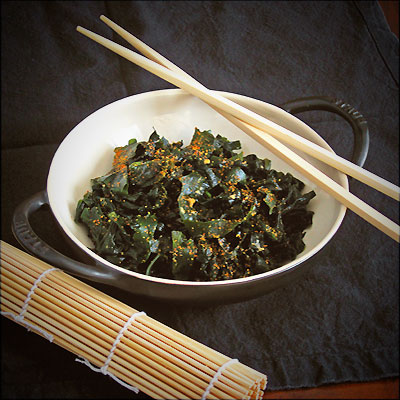
Today we have a guest at Sup’s! table. Rod Rotondi Chef and Founder of Leaf Organics and author of the book Raw Food For Real People. Rod’s passion is Raw Food and I have brought him here to give us an introduction. Because changing the world one bite at a time has become Rod’s approach to social activism. “Everyone has control over what they put in their mouth and these choices make a huge difference for our shared environment– our biosphere, as well as our individual environments– our bodies! Choosing organic, vegan raw foods is not only supporting our individual bodies with optimally nutritious foods, but supporting the growth of the whole organic and vegan industry- basically, our health and the health of our planet.”
Now you know me. I believe we should eat healthy, but I prefer real food with real ingredients– including real fats. Which is not entirely a contridiction. My definition of healthy may be a bit broader, but raw food philosophies are true to my core beliefs. Still, I admit I am not one to limit myself to one way of doing things, especially when it comes to eating. There is too wide a world and I want to experience every bite of it. But one of these bites is raw food. I believe strongly in its validity and enjoy a raw food meal quite often, even if I don’t quite know why. That’s because I also believe in listening to my body, and I believe it tells us quite clearly what it needs.
So read on and educate your mind, so the next time your body speaks you’ll understand what it’s saying about what it needs.
Oh, if this introduction leaves you hungry for more, Rod’s book is available at New World Library. I also have a copy for one lucky reader. All you need to do is leave a message below. I’ll have a “live” video drawing here on Wednesday, December 8. Good Luck and Good Eating!
 Some people think raw food is a new thing– a cutting-edge way of eating, newly discovered by scientists or Hollywood trainers for optimal beauty and health. In fact, a raw diet is not new. It is not the latest craze. Hominids have evolved over seven million years, and for the vast majority of that time we ate only raw, living foods.
Some people think raw food is a new thing– a cutting-edge way of eating, newly discovered by scientists or Hollywood trainers for optimal beauty and health. In fact, a raw diet is not new. It is not the latest craze. Hominids have evolved over seven million years, and for the vast majority of that time we ate only raw, living foods.
The raw-food diet is about getting natural– about rediscovering the natural way for humans to eat. Because despite all the knowledge of humankind– all our science and technology– what will make us healthiest is to eat the foods that nature, in its wisdom, has provided.
Human beings are the only animals on Earth that cook their foods.
Think about that. Then think about this: human beings are the only animals who suffer from a high incidence of degenerative diseases and other health challenges such as cancer, heart disease, stroke, and diabetes.
There is a connection here! These facts are related!
Now I’m not saying we must eat every little item of food completely raw if we want optimal health. I’m not saying that eating raw is a panacea for modern
humankind. However, I am saying that ultimately a primarily raw-food diet is our natural way to eat and, if done correctly, will bring us maximum health.
The raw-food cuisine has rediscovered some of the oldest and healthiest food preparation techniques known to humankind, such as sprouting and low-temperature dehydration- like the way we first made bread.
First, people soaked their grains, then they rinsed them and let them sprout over a couple of days. Then they mashed them up, perhaps adding some salt or herbs for flavor. Then they would make them into cakes and put them on a rock in the sun. They’d go off and work in the fields or hunt, and at the end of the day, the bread would be “cooked.” Just the action of the heat and air would dehydrate the food, leaving it crispy on the outside but warm and yummy on the inside.
In this kind of bread, the digestive enzymes are not killed. The food retains its natural nutrients — in fact, soaking and sprouting the grains greatly increases their
nutritional benefits for the body.
In raw-food cuisine, we make things like bread in a low-temperature dehydrator instead of on a rock, but it is the same process. The dehydrator simply blows warm air over a tray of food, slowly and simply removing much of the moisture.
Health Benefits of Raw Foods:
ENZYMES
Until fairly recently, most people had little understanding of the important role enzymes play in our bodies. But though they’ve often been overlooked, they are in fact the workhorses of our bodies. Enzymes are involved in virtually every metabolic process.
Every food comes with its own perfect complement of digestive enzymes. These digestive enzymes are heat sensitive. The prevailing rule of thumb is that digestive enzymes die at around 118°F.
What this means for us is that when we cook foods at elevated temperatures (above 118°F), we kill their digestive enzymes. As a result, our bodies have to work extra hard to digest the foods. The pancreas especially is stressed, having to make up for the loss of digestive enzymes.
After eating a meal of living foods, one feels energized and renewed. After eating a meal of cooked foods, one often feels tired and sluggish. Many believe that this is due to the body having to work extra hard to digest cooked foods.
pH — THE ACID-ALKALINE BALANCE
Another important health benefit of a raw-food diet is how it affects your body’s pH — its acid-alkaline balance. Your body wants to be slightly alkaline. It is more difficult for diseases to develop in an alkaline body. Also, many people feel better when alkaline; their aches and pains may be lessened or gone. Their mood is better. Their energy seems to flow more vigorously.
A well-balanced raw-food diet is predominantly alkaline, especially when green leafy vegetables play a significant role. This is one reason green juices are so wonderful. By the way, one of the major food groups of the standard American diet, animal protein — be it red meat, poultry, or seafood — is acid producing!
OXYGEN
The human body receives oxygen not only from the air we breathe but also through our skin and from our food. When we cook our food, we remove much of the oxygen stored in it. Getting enough oxygen into the body is a critical factor in good health.
WATER
While food is clearly critical to our health, we should also keep in mind that the human body is around 70 percent water. But despite having all kinds of new and better waters and water purifiers on the market, perhaps the best water in the world for humans is the water we get from plants.
When we cook foods at high temperatures, we remove much of their water. Eating foods raw allows you to take in the natural water in the foods. Proper hydration is key to good health.
ANTIOXIDANTS
Metabolic processes involving oxygen can produce pollutants commonly known as free radicals that can damage our bodies. There are special nutrients known as antioxidants that seek out the free radicals and neutralize or destroy them, thus preventing or at least diminishing negative effects, and in some cases even reversing damage. Free-radical damage is often cited as a contributing factor in diabetes, cancer, macular degeneration, and heart disease. When we eat lots of fresh foods, we have a constant stream of antioxidants entering the body to help neutralize free radicals. And hey, here is some really good news — raw cacao (read: chocolate) is super high in antioxidants!
FIBER
One of the most important factors in good health is proper elimination. It’s a bit awkward for people to talk about, but it is critical for feeling our best and creating a healthy internal environment. Wastes need to be removed from the body. Fortunately, our bodies are equipped with a digestive system, which is incredibly efficient at removing them.
Part of the way this works is that the fiber in the food we eat stimulates peristaltic action in the intestines, which moves everything through the intestines and colon, and out of the body. However, when we eat a diet deficient in fiber, peristaltic action is weak, and wastes can take a long time to get out.
By the way, do you know which three food groups central to the standard American diet have virtually no fiber? You guessed it: meat, dairy, and eggs.
ELECTROMAGNETIC ENERGY
In virtually every culture in the world, there is a phrase that translates roughly as “You are what you eat.” This kind of universal consistency might make us pause and consider the truth of this saying. We have already mentioned how the enzymes, pH, oxygen, water, and fiber in what we eat make us what we are.
Another major factor that contributes to our makeup is what is known as electromagnetic energy. We are electromagnetic creatures — there is actually an electromagnetic charge to our bodies. In fact, there is a kind of photography, called Kirlian photography, that can capture an image of electromagnetic charges. So if you take a Kirlian picture of my hand, you will see a sort of rainbow effect around it. Take a picture of an apple, and you will see a rainbow effect around the apple. Now bake that apple at 200°F for twenty minutes and take another Kirlian photograph. Where there was once an expansive rainbow field, there will now be only a slight emanation from the apple. Its electromagnetic energy has been largely destroyed.
Which brings us back to “You are what you eat.” If you eat food that is vibrant, alive, and full of energy, how do you think you will feel? Conversely, if you eat food
that is cooked to death and devoid of living energy, how do you think you will feel? With every bite, it’s your choice.
Cooking denatures our foods, severely diminishing the protein, vitamins, and minerals available to our bodies. Most people today eat foods that have been treated with chemicals, pesticides, herbicides, fungicides, hormones, and preservatives and that have been irradiated, broiled, baked, fried, freeze-dried, stored on a shelf for a few years, or popped into a microwave. And they eat them expecting to be healthy. Wake up and smell the wheatgrass!
The health crisis we are experiencing today in the United States and other countries is largely a result of our food choices. As animals, we are part of nature. Eating highly processed, denatured, adulterated, and unnatural foods is going to have health repercussions. The good news is that when we give our bodies the living foods they were meant to have, they operate in optimal health.
Allow me to reiterate that at the center of a well-balanced raw vegan diet are green leafy vegetables and other chlorophyll-rich foods such as seaweed. These
foods have an unsurpassed ability to deliver oxygen and alkalize the body due to their high mineral contents, and they are optimal for building an internal environment where fungi, mold, and parasites are hard-pressed to survive.
Wakame Wonder Salad with Leaf Organics House Dressing serves 6 CLICK here for a printable recipe
 1 lemon, peeled and quartered
1 lemon, peeled and quartered- 1⁄2 c namu shoyu (unpasteurized soy sauce)
- 3 T peeled and chopped fresh ginger
- 3⁄4 c cold-pressed olive oil
- 3 clv garlic, peeled and chopped
- 3⁄4 c water, plus more for soaking wakame
- 6 c dried wakame, broken into pieces
Put the lemon first, then the rest of the ingredients except the water, on a blender. B;end well. Add the water and blend again. Serve chilled. This is more dressing than you will need for the salad. The balance may be stored in the refrigerator for up to 2 weeks.
In a large bowl, cover the wakame with water. Soak overnight. This removes much of the saltiness.
Rinse and drain the wakame well. Chop into 1‑inch strips.
Toss the wakame strips with 1‑cup of the dressing, allow to marinate 1 hour, and serve.
NOTE: I garnished mine with a bit of powdered air-dried red pepper (ichimi togarashi) for a punch of heat. GREG


